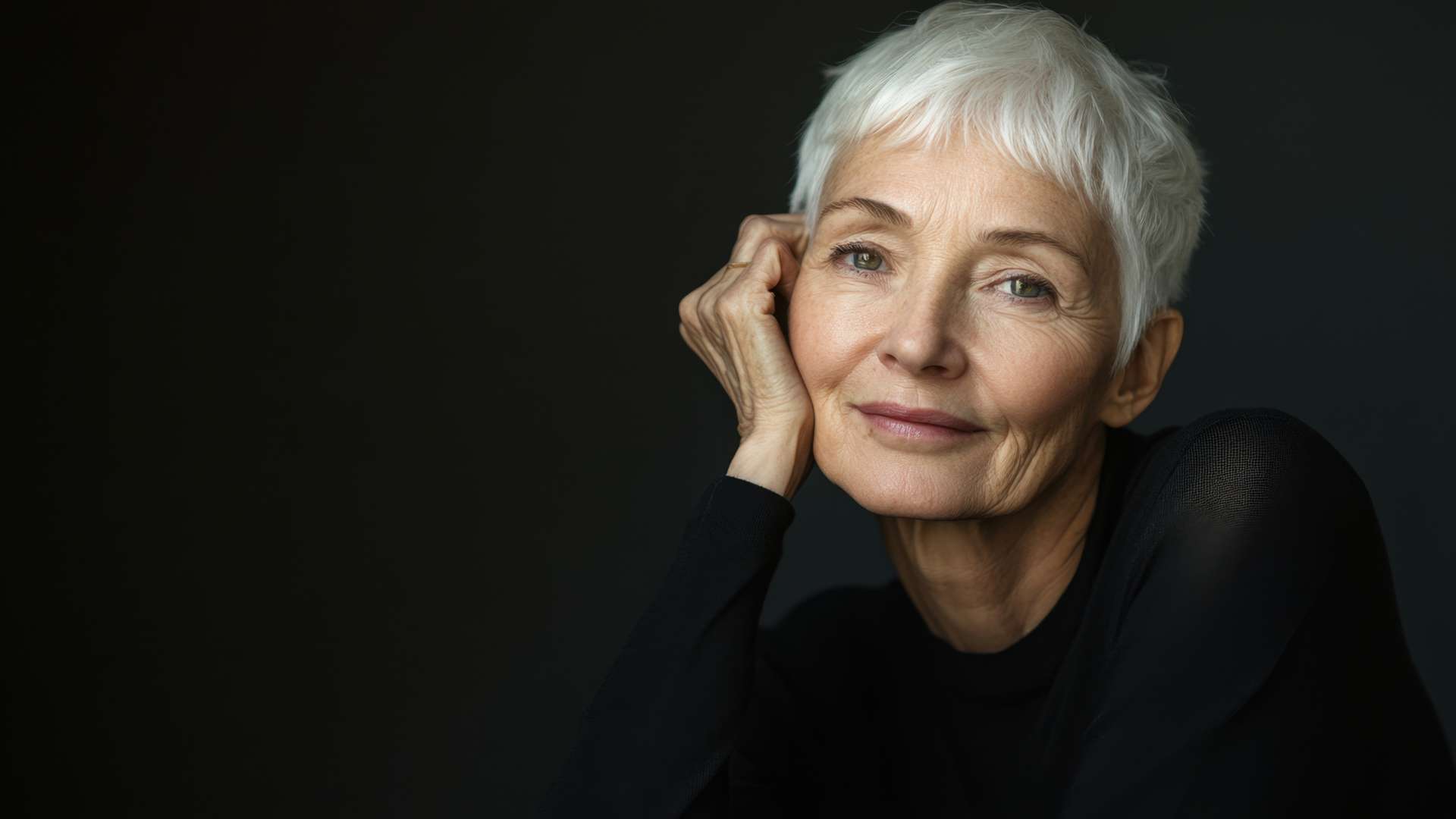Gray hair is a natural occurrence. Whether you have it now or will soon (experts agree that gray hair appears around the age of 40). Learn how to take care of it with a few tips.
Today, camouflage at all costs is a thing of the past! White hair is a thing of the past. Long concealed under dyes, it is now proudly worn by film stars and television icons alike. Even the catwalks are embracing it, making white and gray the new trend colors.
But when the first silver threads appear, there are a few questions to ask: how do you maintain them, keep them bright and healthy?
Here are a few tips to make it a real style signature.
White hair: how can you make it shine?
Once seen as a hidden symbol of old age, white hair is now making a comeback... and looking good too! It now evokes maturity, wisdom, character - and even a certain elegance.
Gone is the systematic reflex of coloring to camouflage everything. From now on, everyone chooses how to wear their hair: some opt for a color that unifies or sublimates their silver hair, others prefer to let it live naturally, in total freedom. Whatever the case, white hair is no longer something to be endured... it's something to be desired, to be claimed, and to become a true style signature.
Why do we get white hair?
The arrival of gray hair, also known as canitis, is a phenomenon as natural as it is inevitable. Man or woman, everyone goes through it at some point... but not at the same time! Although it's often associated with age, it's not necessarily a sign of old age. Some people see their first white hairs in their teens, others much later, sometimes after 60.
Above all, it's a question of genetics and the production of melanin, the pigment that colors our hair. Less melanin = whiter hair. Nothing to worry about! Understanding this mechanism is already the first step towards living better - and, why not, fully assuming - this natural transformation.
A natural.... and irreversible process
Did you know that the color of your hair depends on pigments called melanin? These are produced by melanocytes in the scalp. The more intense the production, the darker the color. When melanin production declines, hair turns white.
This phenomenon, known as canitis, results from the progressive depletion of melanocytes. Once these cells have run out of melanin, they can no longer regenerate: white hair is here to stay. It's an irreversible process, which often begins discreetly... and evolves at its own pace.
The speed at which hair turns white varies from person to person. Heredity plays a key role, but other factors can also speed up the process, such as certain illnesses, medical treatments or the use of a bleaching mousse. stress chronic. So yes, cancer is natural, but it can be influenced by our lifestyle.
The good news? It's not an inevitability, it's an evolution. And once you've understood that, you can choose to go along with it... or celebrate it to the full!
White hair: understanding its evolution (and how to care for it)
Canitia - the famous phenomenon of hair whitening - is mainly due to the progressive exhaustion of melanocytes, the cells responsible for melanin production. There's no going back: once they stop working, hair grows colorless.
But before you have completely white hair, there's a transition phase that can be tricky to manage. White hair often grows faster than white hair. color-treated hair. The result: you end up with several lengths, several colors, and that famous "salt-and-pepper" look. A style that can be sublime... as long as it's well maintained!
If you choose to let your hair grow naturally, regular trimming will keep it looking neat and harmonious. Many people opt for shorter hair during this period, which is easier to maintain and even out.

Color or assume? Either way, gray hair deserves the right care.
Some people are not ready to accept their white hair and prefer to color it. It's a personal choice, perfectly legitimate. But whether they're visible or camouflaged, their needs remain the same: white hair is often drier, duller and more brittle, because it's low in melanin.
A few essential gestures for healthy gray hair:
-
Avoid plucking: contrary to popular belief, plucking does not "grow back blacker"; on the contrary, it can traumatize the follicle and accelerate the process.
-
Choose a purple shampoo: white hair tends to yellow over time. A de-yellowing shampoo neutralizes these unwanted highlights.
-
Moisturize them regularly: opt for moisturizing treatments to prevent them from becoming dry and brittle. Exposure to the sun accentuates this dryness, so remember to protect them.
-
Nourish them deeply: oils such as jojoba or butters such as shea are perfect for strengthening the hair fiber. A nourishing mask once or twice a week will work wonders.
Embracing grey hair is a great sign of self-confidence. But whatever your choice - whether to flaunt it proudly or hide it under color - the most important thing is to take care of it as it deserves.
Take care of the appearance of your gray hair
What haircut to choose when hair turns white? In most cases, short hair is an excellent option. Easier to maintain, requiring little styling, it offers a dynamic, modern and elegant style. For women, it's often a choice that enhances a look that's assertive, active and full of personality.
Naturally, gray hair can appear a little dull or lacking in shine. To sublimate it, opt for shine-boosting treatments. A conditioner nourishing or a mask The right weekly rinse will help bring out the best in your hair.
If you choose to color or balayage your hair, be careful about the products you use. Some colorants can weaken the hair fiber, especially on already sensitized hair. The ideal solution? Turn to a professional and avoid haphazard home experiments. At an institute, you'll benefit from tailor-made advice and treatments adapted to your needs.
Your gray hair deserves all your attention: it can become a real beauty asset, provided you take care of it with the right gestures and the right products.



